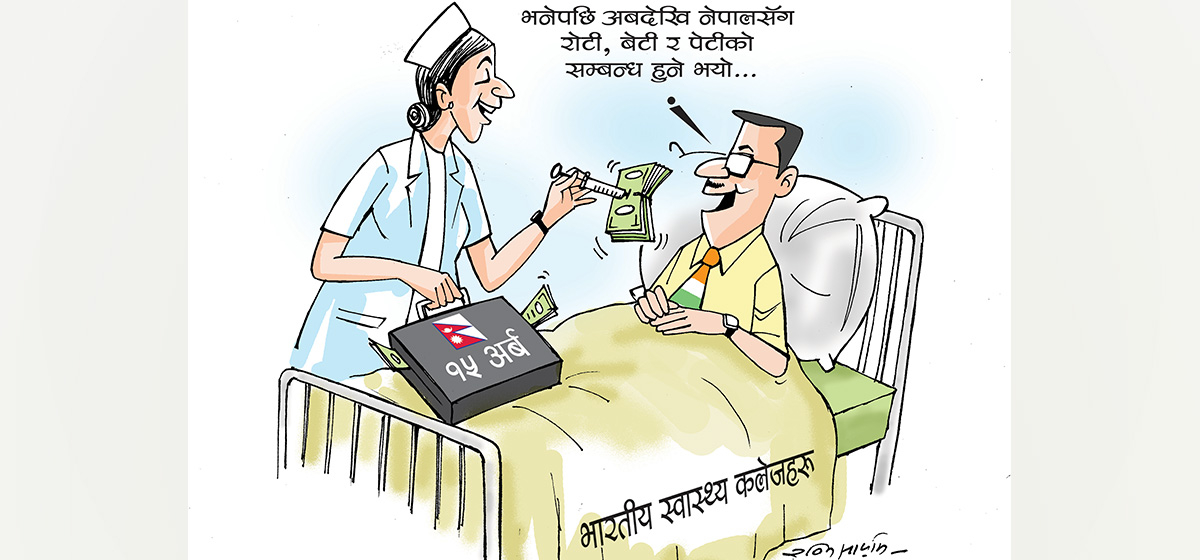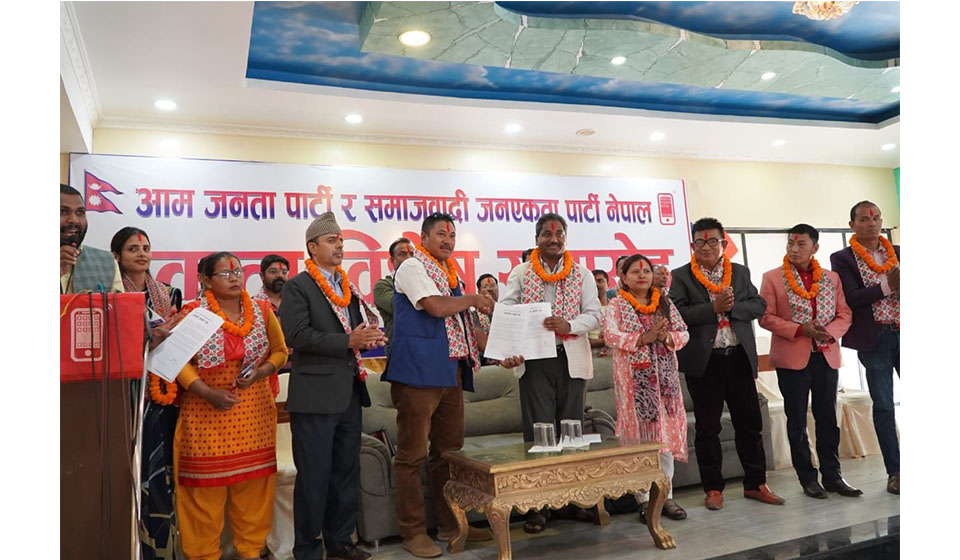
OR
Flawed government policy drowns domestic investment in medical education
Published On: August 10, 2023 08:45 AM NPT By: Ruby Rauniyar

KATHMANDU, Aug 10: A policy decision taken by the government has resulted in the loss of Rs 15 billion to the private sector. After the government made it mandatory for medical colleges offering nursing studies to have their own 100-bed hospital, those institutions have landed in serious trouble.
Meanwhile, the number of Nepali students being admitted to the medical colleges in the border areas of neighboring India has increased. Stakeholders claim that the government’s flawed medical education policy is helping foreign institutes flourish at the expense of Nepal’s. The investments made in this sector have gone down the drain.
Nirmal Sapkota, coordinator of the Medical Education Struggle Committee Nepal, said that after the establishment of the Medical Education Commission (MEC) in accordance with the National Medical Education Act, 2075 for the improvement of medical education, 228 educational institutions running health education programs under the Council for Technical Education and Vocational Training (CTEVT) were closed.
According to the coordinator Sapkota, about 137 pre-diploma level health institutes, 73 diploma level (staff nurse), 10 bachelor level (BN) and eight B.Sc nursing educational institutes were closed. He also claimed that around Rs 15 billion of private sector investment has been sunk.
Also, due to the closure of these medical education institutions, 930 students at the pre-diploma level, 290 at the diploma level and 116 at the graduate level have lost the opportunity to study on scholarships. These institutes had been providing scholarships worth Rs 725.4 million annually.
Sapkota, who is also the general secretary of the Forum for Health and Technical Science, said in an event organized in collaboration with the Medical Education Struggle Committee Nepal and Education Journalist Network Nepal (EJON) that due to the closure of the educational institutions, the enrollment capacity of 3,480 seats in nursing subject has decreased and 7,055 teaching staff have lost their jobs.
Similarly, the future of health sector students towards technical education has led to a dilemma due to the dispute between CTEVT and the MEC. Due to distrust of each other between the two governmental agencies, all entrance examinations for health education scheduled to be held from August 9, 2023 have been postponed. This scenario has disappointed the students. Due to the flawed policy of the government, the students are frustrated and are forced to choose studying abroad for quality education.
“The government is working to drown domestic investment and feed foreigners by adopting a flawed policy. Looking at the situation in Nepal, 157 nursing colleges have been established in the Indian region across the border by following the curriculum of CTEVT,” said General Secretary Sapkota.
“There has been an increase in the number of Nepali students in nursing colleges opened in India just across the border. Foreign universities and educational institutes are attracting Nepali students by linking them with the curriculum of CTEVT. The MEC is altering the entrance examination in the name of quality, which will prove fatal for the education sector of Nepal.”
None of the private colleges have their own hospital under CTEVT.
Netra Raj Chataut, president of the Forum for Health and Technical Science, says citing government data that it costs Rs 10 million to build a 100-bed hospital .
“It is not possible for every private medical educational institution to implement this policy. We were operating health educational programs in collaboration with other government and private hospitals. Our demand is that they should be able to operate it in the same way,” he said.
In the National Human Resources for Health Strategy of Nepal released by the Ministry of Health and Population (MoHP), it is mentioned that currently 22 percent of approved posts in various levels of health institutions are vacant. In the strategy, it is pointed out that around 165,440 additional human resources are needed at the government level to achieve the goal of sustainable development in the health sector by 2030. “Currently, there is an equal contribution of government and private sectors towards health services in the country. In this sense, in order to achieve sustainable goals in the health sector. It is estimated that there will be a shortage of 330,880 additional human resources both in the government and private sectors,” said General Secretary Sapkota, “Government data of 2012 shows that 679 doctors from Nepal migrated to the United States and 130 doctors to the United Kingdom. By 2023, this number had tripled. The government is sending around 10,000 nurses to the UK as per the G2G agreement. Within the last one year, the number of people who have received NOC for studying abroad from the Ministry of Education is about 110,217.”
General Secretary Sapkota said that the MEC and CTEVT have created obstacles to make Nepal a medical hub and are not working in the interest of the country. He said that the Forum for Health and Technical Science and Medical Education Struggles Committee started a protest demanding the cancellation of MEC and CTEVT.
You May Like This

SC orders govt to produce Bishwakarma within 24 hours
KATHMANDU, Aug 27: The Supreme Court (SC) on Sunday ordered the government to produce Khadga Bahadur Bishwakarma, the spokesman of... Read More...

Government moves to hand over Dharahara project to NT
KATHMANDU, Aug 19: The government has started preparations to hand over construction of the new Darahara tower to Nepal Telecom... Read More...




Just In
- Sunkoshi-Marin Diversion Project’s tunnel construction nears completion, breakthrough scheduled for May 8
- Govt tightens security arrangement for Third Investment Summit 2024
- Pesticide residue found in vegetables in Nepalgunj
- Aam Janata Party and Samajwadi Jana Ekata Party merge
- 1,600 participants confirmed for Nepal Investment Summit
- Ilam-2 by-elections held peacefully, vote count likely to start tonight
- NEA schedules five-day power cut across Kathmandu Valley for underground cable installation
- Hundreds of passengers including foreign tourists in distress as poor visibility halts flights to and from PRIA







-1200x560-wm_20240427144118.jpg)





Leave A Comment